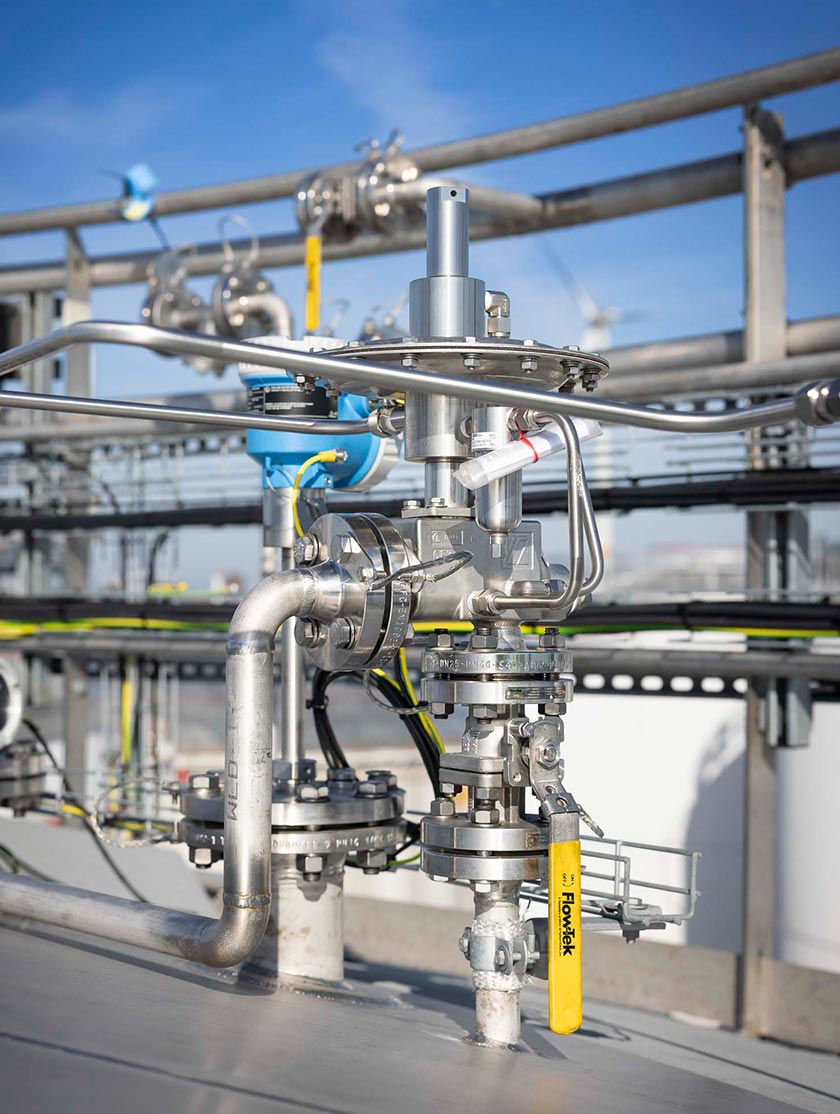Inline vs End-of-Line Flame Arrestors: Key Differences Explained
Flame arrestors (also known as flame arresters) are essential safety devices used in industry to prevent explosions caused by the spread of flames. They are specifically designed to control and extinguish flames, ensuring the safety of both personnel and equipment. Flame arrestors operate by capturing and extinguishing flames while allowing gases or liquids to flow.
Types of Flame Arrestors
There are two types of flame arrestors: inline and end flame arrestors. Although both systems have the same purpose, namely to prevent explosions, there are some important differences between them.
Inline Flame Arrestors
Inline flame arrestors are installed in pipes or ducts and are used to protect systems through which potentially flammable gases or liquids flow. They are usually installed at the inlet to the system, just before the source of ignition. Inline flame arrestors are designed to contain and extinguish flames that may result from a flashback or explosion in the system, preventing them from spreading to other parts of the system or the external environment.
End-of-Line Flame Arrestors
End-of-line flame arrestors, on the other hand, are installed at the end of the pipe or duct, just before the outlet. They are designed to protect systems that emit flammable gases or vapours, such as storage tanks, from external sources of ignition. End-of-line flame arrestors prevent the spread of flames that may enter the system through the exhaust, effectively extinguishing the flame and preventing further damage.
Differences Between Inline and End-of-Line Flame Arrestors
- A significant difference between inline and end-of-line flame arrestors is the method of installation. Inline flame arrestors are mounted directly into the pipe or duct, requiring precise alignment and installation. End-of-line flame arrestors, on the other hand, are more flexible and can be mounted on a bracket at the end of the pipe or duct, making them easier to install and maintain.
- Another difference is their design and construction. Inline flame arrestors typically have lower pressure drops, allowing for greater flow, while end-of-line flame arrestors have higher pressure drops due to their larger size and more complex construction.
In short, both inline and end-of-line flame arrestors perform the important function of preventing explosions caused by flame spread. Understanding the differences and selecting the right type for your application is crucial to ensuring maximum safety and efficiency of your industrial processes.
Looking for The Right Flame Arrestor? Get Expert Help Choosing the Ideal Arrestor Engineered To Fit Your Needs |
Cashco’s flame arrestors are engineered to stop the propagation of flames in gas piping systems, helping protect equipment, personnel, and facilities. For more information about Cashco's arrestors, view all models here .
Cashco is dedicated to ensuring you select the best solution for your tank protection needs. Need help choosing the right flame arrestor? Contact us and our experienced team will gladly assist you in finding the ideal product!
Why Flame Arrestors Matter |
Cashco Flame Arrestors are specifically engineered to match the explosive mixtures Maximum Experimental Safe Gap, in order to ensure complete extinction of the flame.



